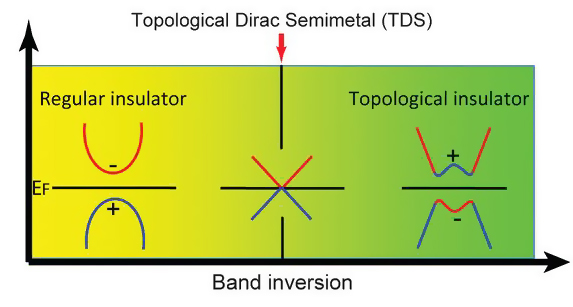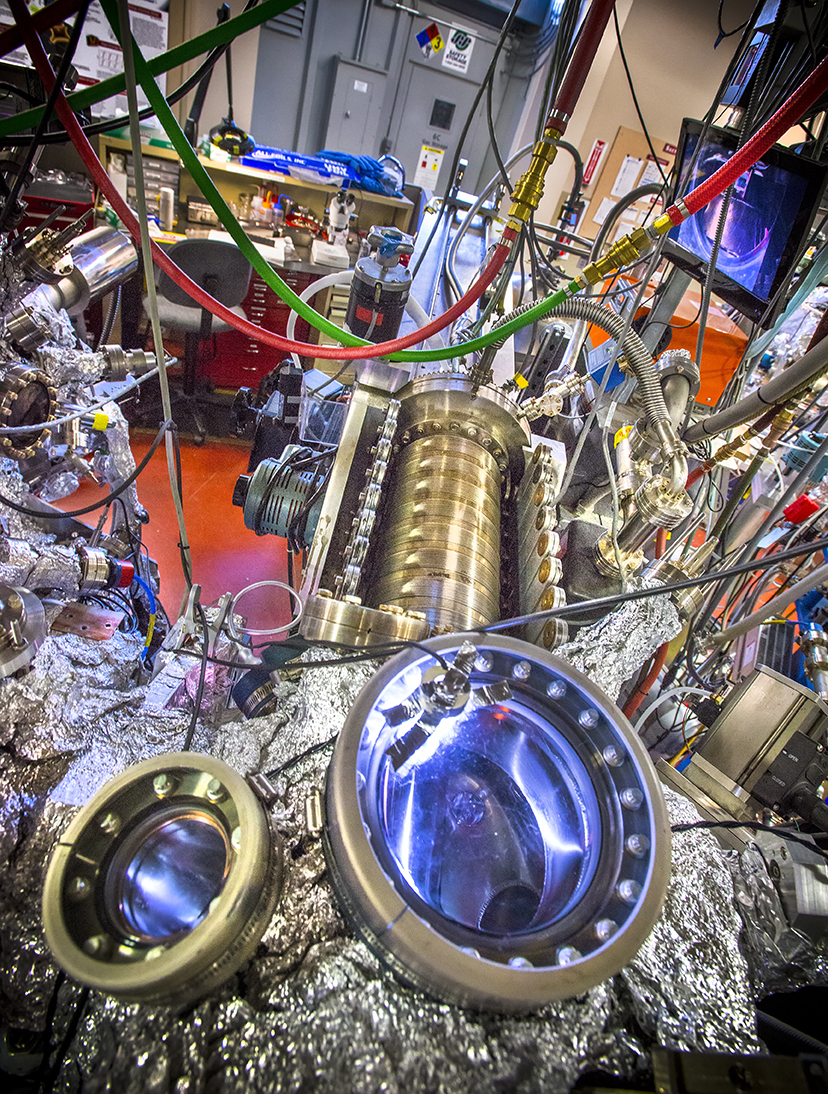ALS researchers have discovered a material that is essentially a 3D version of graphene—the 2D sheets of carbon through which electrons race at many times the speed at which they move through silicon. The discovery promises exciting new things to come for the high-tech industry, including much faster transistors and far more compact hard drives. Researchers discovered that sodium bismuthide can exist as a form of quantum matter called a three-dimensional topological Dirac semi-metal (3DTDS). This is the first experimental confirmation of 3D Dirac fermions in the interior or bulk of a material, a novel state that was only recently proposed by theorists. 3DTDS can serve as an ideal platform for the systematic study of quantum phase transitions between rich topological quantum states.

Two of the most exciting new materials in the world of high technology today are graphene and topological insulators, crystalline materials that are electrically insulating in the bulk but conducting on the surface. Both feature 2D Dirac fermions (fermions that aren’t their own antiparticle), which give rise to extraordinary and highly coveted physical properties. Topological insulators also possess a unique electronic structure, in which bulk electrons behave like those in an insulator while surface electrons behave like those in graphene.
The distinct electronic structure of a 3DTDS not only makes it possible to realize some exciting phenomena and applications of graphene in 3D materials—it also gives rise to many unusual properties. In addition to these unusual properties, the 3DTDS is the neighbor state to various quantum states ranging from regular band insulators to topological superconductors. This versatility makes the 3DTDS an ideal parent compound for the realization of other novel states, as well as a platform for the systematic study of topological quantum phase transitions.
In the sodium bismuthide the researchers studied, the bulk conduction and valence bands touched only at discrete points and disperse linearly along all three momentum directions to form bulk 3D Dirac fermions. The discovery was made at ALS Beamline 10.0.1, which is optimized for electron structure studies. The collaborating research team first developed a special procedure to properly synthesize and transport the sodium bismuthide, a semi-metal compound identified as a strong 3DTDS candidate. Researchers then determined the electronic structure of their material using Angle-Resolved Photoemission Spectroscopy (ARPES), in which x-rays striking a material surface or interface cause the photoemission of electrons at angles and kinetic energies that can be measured to obtain a detailed electronic spectrum.

ALS Beamline 10.0.1 has a unique capability whereby the analyzer is moved rather than the sample for the ARPES measurement scans. This allowed the researchers to scan their samples much more efficiently, as the cleaved sample surfaces sometimes had multiple facets, which made the rotating-sample measurement schemes typically employed for ARPES measurements difficult to carry out.
Sodium bismuthide will need proper packaging to be used in devices packaging, but it triggers the exploration for the development of other 3DTDS materials more suitable for everyday devices, and an example has been discovered by our more recent work also done at ALS: Nature Materials 13, 677 (2014). Sodium bismuthide and other 3DTDS can also be used to demonstrate potential applications of 3DTDS systems, which offer some distinct advantages over graphene. A 3DTDS system could provide a significant improvement in efficiency in many applications over graphene because of its 3D volume. Currently, preparing large-size atomically thin single domain graphene films is still a challenge. It could be easier to fabricate graphene-type devices for a wider range of applications from 3DTDS systems.
Contact: Yulin Chen
Research conducted by: Z. Liu and Z. Shen (Stanford University); B. Zhou and Y. Chen (Oxford University and ALS, LBNL); Y. Zhang (ALS, LBNL); Z. Wang, H. Weng, Z. Fang, D. Prabhakaran, and X. Dai (Chinese Academy of Sciences); S. Mo and Z. Hussain (ALS, LBNL).
Research funding: DOE Office of Science and the National Science Foundation of China. Operation of the ALS is supported by the U.S. Department of Energy, Office of Basic Energy Sciences.
Publication about this research: Z. Liu, B. Zhou, Y. Zhang, Z. Wang, H. Weng, D. Prabhakaran, S. Mo, Z. Shen, Z. Fang, X. Dai, Z. Hussain, and Y. Chen, “Discovery of a Three-dimensional Topological Dirac Semimetal, Na3Bi,” Science 343, 864 (2014).
ALS SCIENCE HIGHLIGHT #294